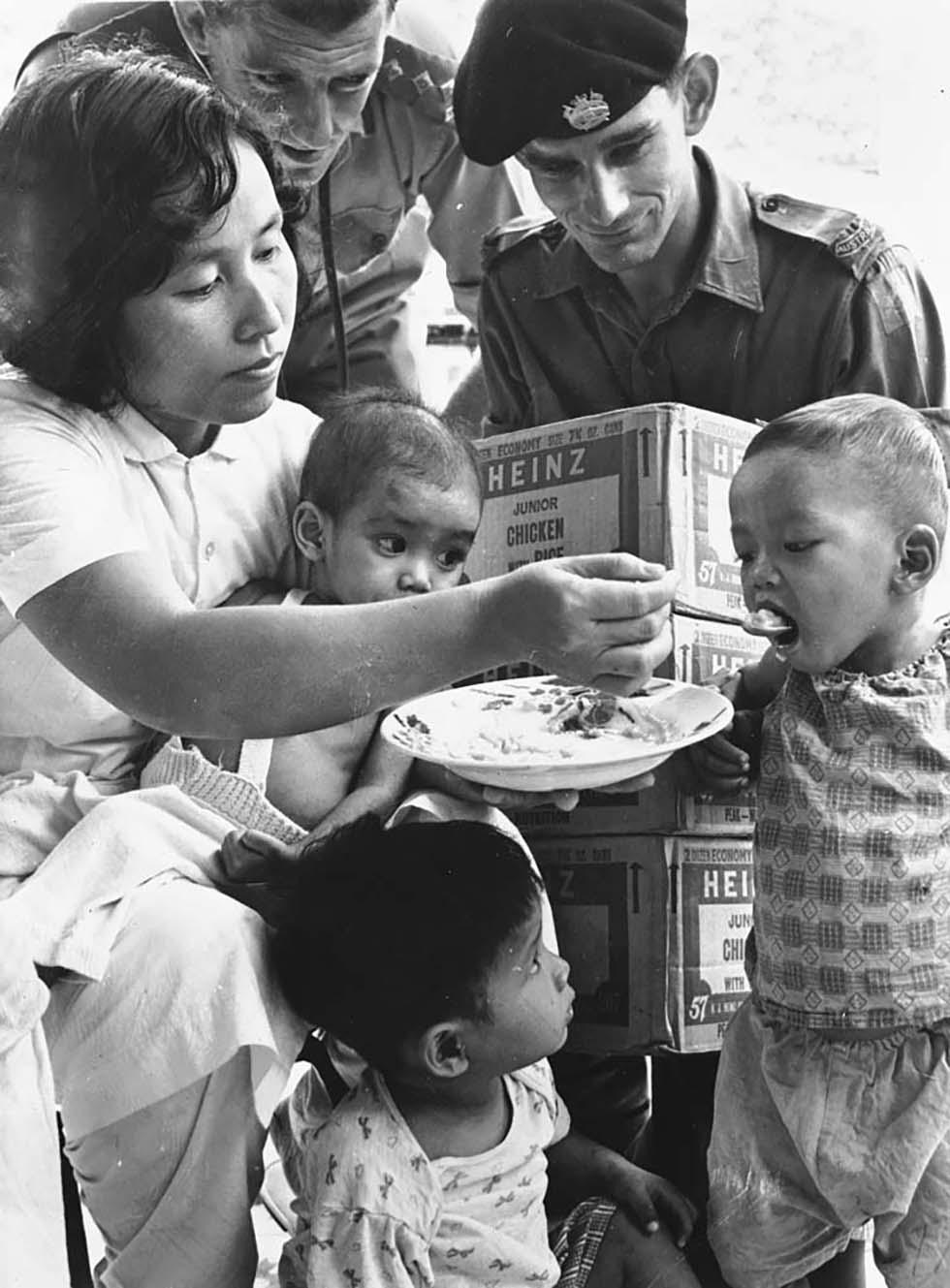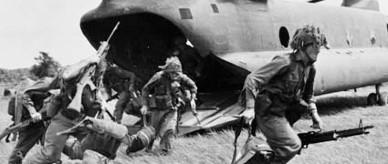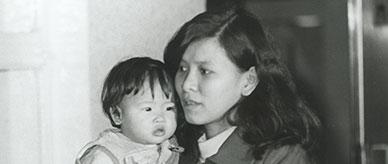


About this record
This black-and-white photograph shows two Australian soldiers from the 1st Australian Task Force providing civilian food aid to a Vietnamese woman and her three children in Phuoc Tuy province during the Vietnam War. The woman cradles a baby on her lap and feeds her children from a bowl, while the two soldiers look on. One of the soldiers holds three cartons of Heinz food products. The photograph is clearly posed.
Educational value
- The image shows food distribution in Phuoc Tuy province, part of the Australian military's strategy of 'winning hearts and minds' of the people living there. The aid program aimed to win over villagers who the Vietcong relied on for food and shelter. Aid was delivered by the 1st Australian Task Force, firstly by a small team and then after 1967 by the 1st Australian Civil Affairs Unit, which included Engineer, Agricultural, Medical, Education and Liaison Detachments.
- The soldiers in this photograph were members of the 1st Australian Task Force (1ATF), which comprised two battalions with combat and logistic support, and was deployed to South Vietnam in 1966. The 1ATF based its operations at Nui Dat in Phuoc Tuy province and set out to gain control of the area by destroying Vietcong bases and cutting the Vietcong off from sources of food, money and recruits in the villages.
- In addition to the food seen here, Australian army personnel visited about 15 villages each week. They distributed clothing and household goods, provided health and dental care, constructed windmills, water reticulation schemes, school and community buildings, and set up agricultural and animal husbandry ventures. They also conducted English language lessons and sports activities. The army delivered some 253 aid projects between 1967 and 1971.
- The campaign to win hearts and minds failed partly because much of Phuoc Tuy province was sympathetic to the Vietcong and people distrusted South Vietnam's corrupt government. The Australian army also misunderstood the local culture and failed to adequately consult villagers about what aid projects they wanted. Additionally, villagers were forced to resettle without compensation.
- During the Vietnam War the United States and Australian military distributed food aid to civilians because of food shortages caused by the destruction of cropland and villages. While aerial bombing caused damage, the United States military also sprayed herbicides, including Agent Orange, on crops to cut food supplies to Vietcong troops and to force the Vietcong out of their jungle hideouts, but it was the civilian population who suffered the most. South Vietnam moved from being an exporter to an importer of rice when 43 per cent of the cultivated land was sprayed.
- The posed nature of this photograph suggests it was taken for propaganda purposes, and may have been used to promote support for the war back home by emphasising the army's role in providing humanitarian relief to people in South Vietnam. Public opposition to Australia's participation in the Vietnam War grew after 1966 when Australia committed more troops and as awareness of the war and opposition to selective conscription increased.
Acknowledgments
Learning resource text © Education Services Australia Limited and the National Archives of Australia 2010.
Related themes
Need help with your research?
Learn how to interpret primary sources, use our collection and more.


